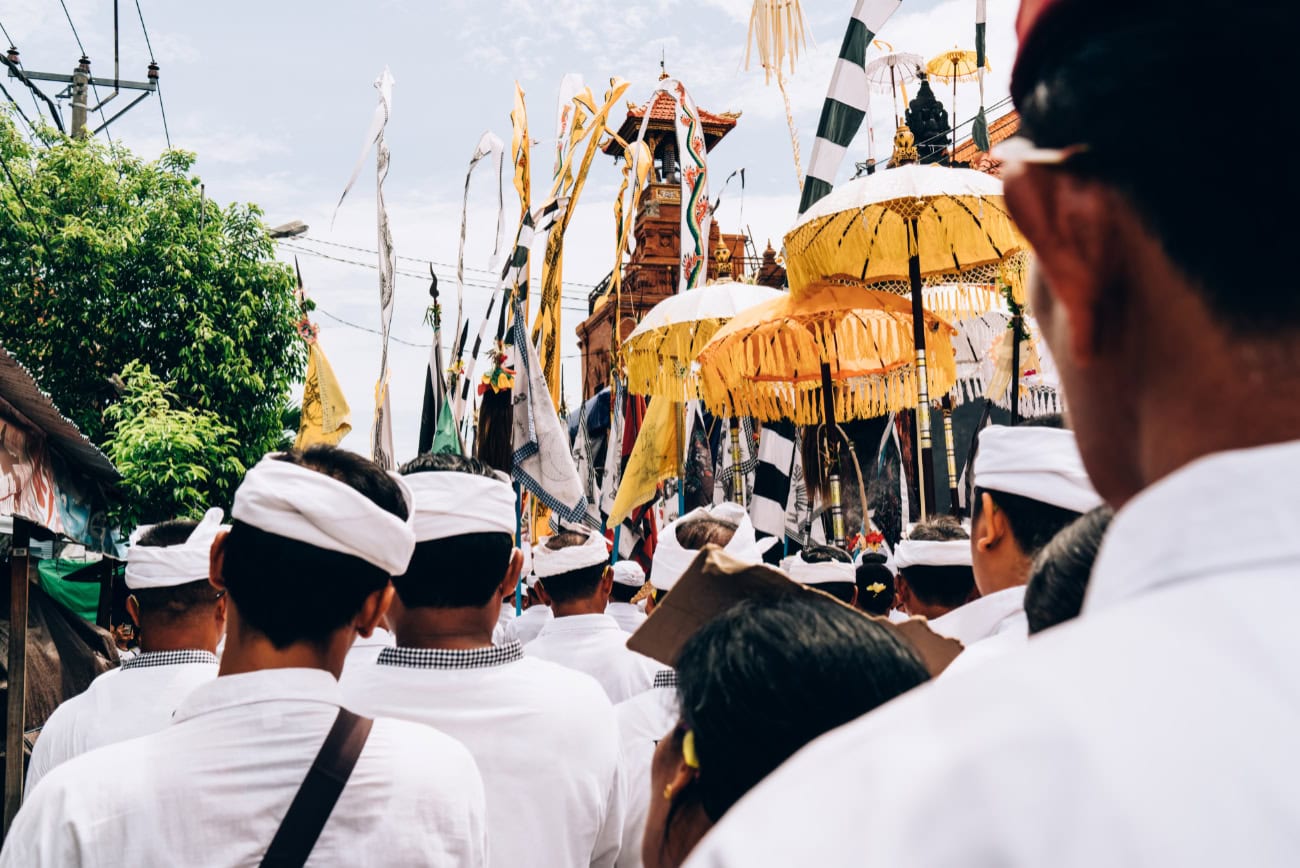Bali, often referred to as the “Island of the Gods,” is renowned not only for its breathtaking landscapes but also for its deeply spiritual culture. Unlike the predominantly Muslim population of Indonesia, the majority of Balinese adhere to a unique form of Hinduism known as Agama Hindu Dharma. This distinct faith is a vibrant tapestry woven from ancient Hindu doctrines, indigenous animistic beliefs, and the philosophical influences of Buddhism, creating a spiritual practice that permeates every aspect of daily life on the island.
A Unique Blend: Agama Hindu Dharma
Balinese Hinduism is not identical to the Hinduism practiced in India. Over centuries, it has evolved to incorporate local customs, ancestral worship, and the belief in nature spirits. This syncretic nature gives it a unique character, making it a fascinating subject for visitors and scholars alike. At its core, Balinese Hinduism believes in one supreme being, Ida Sanghyang Widi Wasa, the creator of the universe and the source of all life. This singular God manifests in various forms, including the Hindu trinity of Brahma (the Creator), Vishnu (the Preserver), and Shiva (the Destroyer), along with a pantheon of other deities and deified ancestors.
The Balinese worldview emphasizes the constant struggle and balance between good (dharma) and evil (adharma). This duality is not seen as a conflict to be eliminated, but rather as an inherent part of existence that must be harmonized. This pursuit of balance is evident in countless rituals and daily practices, from the placement of offerings to the architecture of temples and homes.
Tri Hita Karana: The Philosophy of Harmony
Central to Balinese Hinduism is the philosophy of Tri Hita Karana, which literally translates to “three causes of well-being” or “three reasons for prosperity.” This profound concept outlines the three essential relationships that must be maintained in harmony to achieve spiritual and physical well-being:
- Harmony with God (Parhyangan): This relationship is fostered through devotion, prayers, and offerings to Ida Sanghyang Widi Wasa and the various deities. It is manifested in the countless temples (pura) that dot the island, from grand sea temples like Tanah Lot and Uluwatu to small family shrines in every home.
- Harmony with People (Pawongan): This emphasizes the importance of maintaining good relationships within the community, family, and with fellow human beings. It is reflected in the strong communal spirit, mutual cooperation (gotong royong), and the intricate social structures that govern village life.
- Harmony with Nature (Palemahan): This highlights the respect and reverence for the natural environment, recognizing its sacredness and the interconnectedness of all living things. It is seen in the careful cultivation of rice paddies, the protection of sacred trees, and the belief in nature spirits that inhabit mountains, rivers, and forests.
The philosophy of Tri Hita Karana is not merely an abstract idea; it is a guiding principle that shapes Balinese architecture, agriculture (such as the Subak irrigation system), social customs, and daily rituals, ensuring a holistic approach to life that seeks balance and prosperity for all.
Daily Life: A Continuous Act of Devotion
For the Balinese, religion is not confined to temples or specific days; it is an integral part of their everyday existence. The island pulsates with a continuous rhythm of ceremonies, prayers, and offerings. Here’s how Balinese Hinduism manifests in daily life:
Canang Sari (Daily Offerings): Perhaps the most visible manifestation of Balinese devotion are the small, intricately woven palm-leaf baskets filled with flowers, rice, cookies, and incense, known as Canang Sari. These offerings are placed multiple times a day in various locations – on the ground for the lower spirits, and on shrines for the higher deities – as a gesture of gratitude and to maintain balance between the positive and negative forces.
Temple Ceremonies (Odalan): Every temple in Bali has its own anniversary celebration, or odalan, which occurs every 210 days according to the Balinese Pawukon calendar. These elaborate ceremonies involve vibrant processions, traditional music (gamelan), dance, and prayers, drawing large crowds of devotees dressed in traditional attire.
Rites of Passage (Manusa Yadnya): From birth to death, Balinese life is marked by a series of elaborate ceremonies that celebrate and guide individuals through different stages of life. These include tooth-filing ceremonies (Metatah), marriage rituals, and the famous cremation ceremonies (Ngaben), which are not mournful events but joyous celebrations of the soul’s journey to the afterlife.
Festivals and Holy Days: The Balinese calendar is rich with festivals. Nyepi, the Day of Silence, is a unique occasion where the entire island shuts down for self-reflection and meditation. Galungan and Kuningan celebrate the victory of dharma over adharma, marked by towering bamboo poles (penjor) adorning the streets.
Ancestral Worship: Reverence for ancestors is a cornerstone of Balinese belief. Ancestors are believed to watch over their descendants and are honored through offerings and ceremonies, ensuring their continued blessings.
The Role of Temples (Pura)
Temples are the focal points of Balinese spiritual life. There are thousands of pura across the island, each serving a specific purpose. These include:
- Pura Kahyangan Jagat: The great directional temples, such as Pura Besakih (the Mother Temple), Pura Lempuyang, and the sea temples of Tanah Lot and Uluwatu, which protect the island from evil spirits.
- Pura Desa: Village temples dedicated to the founders of the village.
- Pura Puseh: Temples dedicated to the ancestors.
- Pura Dalem: Temples associated with death and the underworld.
- Pura Tirta: Water temples, crucial for the Subak irrigation system.
Each temple is a sacred space, often adorned with intricate carvings, statues, and offerings, reflecting the deep artistic and spiritual devotion of the Balinese people.
Conclusion
Balinese Hinduism is more than just a religion; it is a way of life that shapes the island’s landscape, its art, its social structure, and the daily routines of its people. The philosophy of Tri Hita Karana, with its emphasis on harmony with God, people, and nature, provides a profound framework for existence. For visitors, understanding this spiritual essence enriches the travel experience, offering a deeper appreciation for the beauty, tranquility, and unique cultural identity of Bali, the Island of the Gods.

